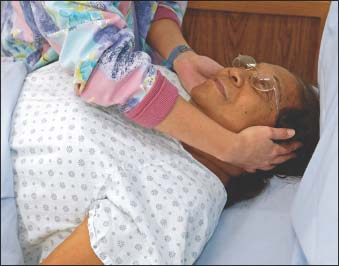Passive Range-of-Motion Exercises
Used to move the patient’s joints through as full a range of motion (ROM) as possible, passive ROM exercises improve or maintain joint mobility and help prevent contractures. Performed by a nurse, a physical therapist, or a caregiver of the patient’s choosing, these exercises are indicated for the patient with temporary or permanent loss of mobility, sensation, or consciousness. Properly performed passive ROM exercises require recognition of the patient’s limits of motion and support of all joints during movement.
Exercises performed in the bed help with joint mobility, strength, and endurance and they prepare the patient for ambulating. During passive ROM exercises, another person moves the patient’s extremities so that the joints move through a complete ROM, maximally stretching all muscle groups within each plane over each joint.
Passive ROM exercises are contraindicated in patients with septic joints, acute thrombophlebitis, severe arthritic joint inflammation, or recent trauma with possible hidden fractures or internal injuries.
ROM exercises require no special equipment other than gloves and personal protective equipment as indicated.
Implementation
Determine the joints that need ROM exercises, and consult the doctor or physical therapist about limitations or precautions for specific exercises.
The exercises below treat all joints, but they don’t have to be performed in the order given or all at once. You can schedule them over the course of a day, whenever the patient is in the most convenient position. Remember to perform all exercises slowly and gently to the end of the normal ROM or to the point of pain, but no further. (See Glossary of joint movements.) Hold the position for 1 to 2 seconds.
Confirm the patient’s identity using at least two patient identifiers according to your facility’s policy.4
Explain the procedure to the patient. Answer all questions to decrease anxiety and increase cooperation.
Raise the bed to a comfortable working height.
Exercising the Neck
Support the patient’s head with your hands and extend her neck, flex her chin to her chest, and tilt her head laterally toward each shoulder.
Rotate the patient’s head from right to left (as shown below).
 |
Exercising the Shoulders
Support the patient’s arm in an extended, neutral position; then extend her forearm and flex it back.
Abduct her arm outward from the side of her body, and adduct it back to the side.
Stay updated, free articles. Join our Telegram channel

Full access? Get Clinical Tree


Get Clinical Tree app for offline access
